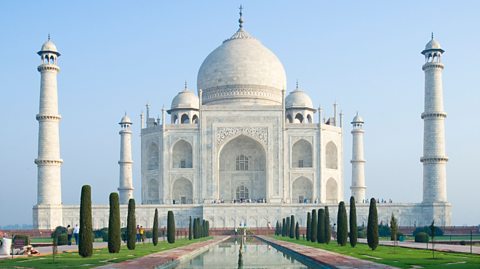From the highest in the world to the one of the longest, these incredible railways each offer something totally unique.
As they speed through mountains, plateaus, desert plains and capital cities, there is always something to wonder at. Sometimes, itâs even the famous trains themselves that attract the tourists.
So sit back, relax, and let us take you on a scenic journey of the worldâs most amazing railways.
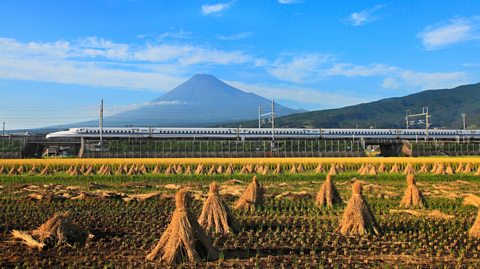 Image source, SHOSEI/Aflo
Image source, SHOSEI/AfloTĆkaidĆ Shinkansen Line, Japan
Just days before the opening of the 1964 Tokyo Olympics, the Japanese Emperor Hirohito was at a different type of opening ceremony. He was there to witness the first Shinkansen (bullet train) leave Tokyo, heading for Osaka on the TĆkaidĆ Shinkansen Line. Travelling at speeds of up to 210km/h (130mph), this was the first high-speed railway in the world.
The line passes through 108km (67 miles) of tunnel and crosses over 3,000 bridges. These days, a train leaves Tokyo for Osaka every 3 minutes at peak hours, with seats for 1,323 passengers. As well as increasing the trainâs speed, the distinctive streamlined nose of a Shinkansen also helps to reduce noise pollution.
Travelling on the TĆkaidĆ Shinkansen Line, passengers are gifted an extraordinary glimpse of Mount Fuji. Japanâs tallest mountain, this volcano is famous for its snow-capped peak and pleasingly symmetrical appearance. Along with Mount Haku and Mount Tate, it is one of the Three Holy Mountains of Japan. For an unobstructed view, passengers are encouraged to book seats on the right hand side of the train heading away from Tokyo, and on the left hand side if heading towards Tokyo.
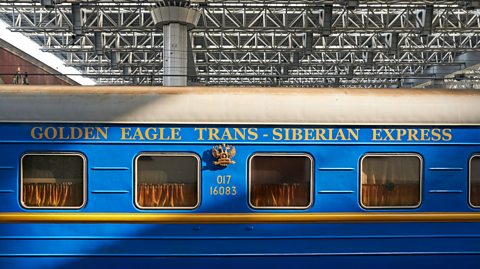 Image source, Vostok
Image source, VostokTrans-Siberian Railway, Russia
Can you imagine taking a train that crosses an incredible eight time zones? Journey 9,290km (5772 miles) from Moscow to Vladivostok in Russia, and youâll do just that. Itâs one of the longest railway journeys in the world.
Siberia is a vast geographical region within Russia that stretches from the Ural Mountains in the west to the Pacific Ocean in the east. In the 19th Century, its population was sparse and the area had not been extensively explored. The Trans-Siberian Railway helped to change that.
Originally, the railroad was to run through the Chinese region of Manchuria. However, following the Russo-Japanese War of 1904-5, the authorities chose to keep the railway entirely within Russian territory, even if it meant making the journey longer.
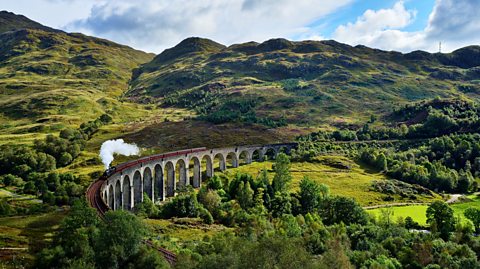 Image source, Westend61
Image source, Westend61West Highland Line, Scotland
If youâve watched the Harry Potter movies, you might recognise this railway from the memorable shots of the Hogwarts Express crossing the Glenfinnan Viaduct. Rising over 98 ft (30 m) from the ground and made up of 21 arches, the viaduct is a popular spot for photographers looking to get a shot of the majestic Jacobite Steam Train.
From the train, itâs possible to see the Scottish Highlands in all their glory. From the Silver Sands of Morar to Loch Lomond, from the craggy mountains to the heather-filled moors, and all their small and remote stations. Itâs sometimes even possible to see red deer as you pass by.
 Image source, tampatra
Image source, tampatraMaeklong Railway, Thailand
As the trains of the Maeklong Railway travel through the Maeklong Railway Station Market, they pass within inches of bystanders.
Either side and on top of the tracks, vendors sell their wares at one of Thailandâs largest outdoor fish markets. Up to eight times a day, trains squeeze through the narrow gap. Each train is heralded by a megaphone announcement and loud horns, giving the vendors time to swiftly pull back their awnings and move their produce, often kept in baskets or shelves on wheels. The market is sometimes referred to as the folding umbrella market due to the retractable awnings.
You might be surprised to learn that the market predates the train line, having been around since the early 20th Century. When the trainline was built straight through it, the market simply did not move.
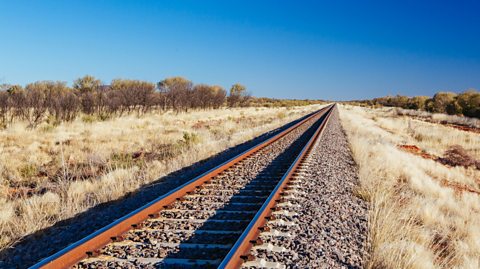 Image source, FiledIMAGE
Image source, FiledIMAGEThe Ghan, Australia
Originally known as The Afghan Express, this train covers 2979 km between the southern city of Adelaide and the northern coastal town of Darwin, crossing Australiaâs famous Red Centre. Built in stages over decades, the first journey on the full length of track took place in 2004.
The Ghan is the worldâs longest passenger train, stretching to 1.1 km (0.7 miles). The predominantly tourist passengers spend two or three nights on the train, with the opportunity to get off and explore towns like Alice Springs (close to the famous Uluru sandstone rock formation) and Katherine.
Sights en-route include an underground Serbian Orthodox Church in Manguri and the Iron Man sculpture, north of Kulgera, which was created to commemorate both the laying of the millionth railway sleeper and those workers who had toiled to build this epic railway.
In 2018, nearly half a million Australians tuned into a gentle three hour long documentary, without ad breaks, showing a driverâs seat view of the stunning views. It proved popular enough that a 17 hour version was later released.
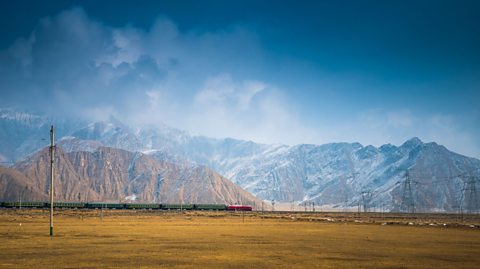 Image source, kittisun kittayacharoenpong
Image source, kittisun kittayacharoenpongQinghai-Tibet Railway, China
Built to connect to Tibet's capital Lhasa to the province of Qinghai, this is the highest railway in the world. It is an impressive feat of engineering, having been built in an area prone to earthquakes, compounded by melting ice and a layer of Permanently frozen soil.. The line was not without controversy, both when it was built and opened.
At 5,072m at its highest point, the engineers faced a number of challenges in making the trains safe for passengers. That high up, the oxygen levels in the atmosphere are noticeably lower and could cause breathing difficulties for those on board.
To help, the oxygen level of each train carriage is carefully monitored, with extra oxygen pumped in as required. UV coatings have been applied to the windows to protect against the strong ultraviolet rays.
As the train passes through the Tibetan Plateau, passengers are treated to incredible views of Qinghai Lake (Chinaâs largest lake), the Kunlun mountain range and the Hoh Xil Nature Reserve. Thereâs a reason why this region is often referred to as âthe roof of the worldâ.
What happens to our bodies in a plane?
Why food tastes different and you may break wind more often.
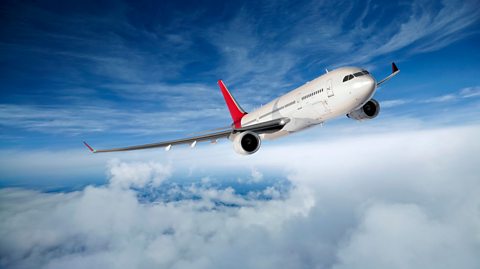
How did Britain become an island?
The UK has left the European continent more than once.
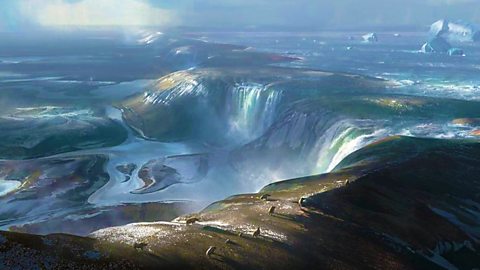
The Seven Wonders of the World quiz
From the ancient to the modern, how much do you know about these famous landmarks?
